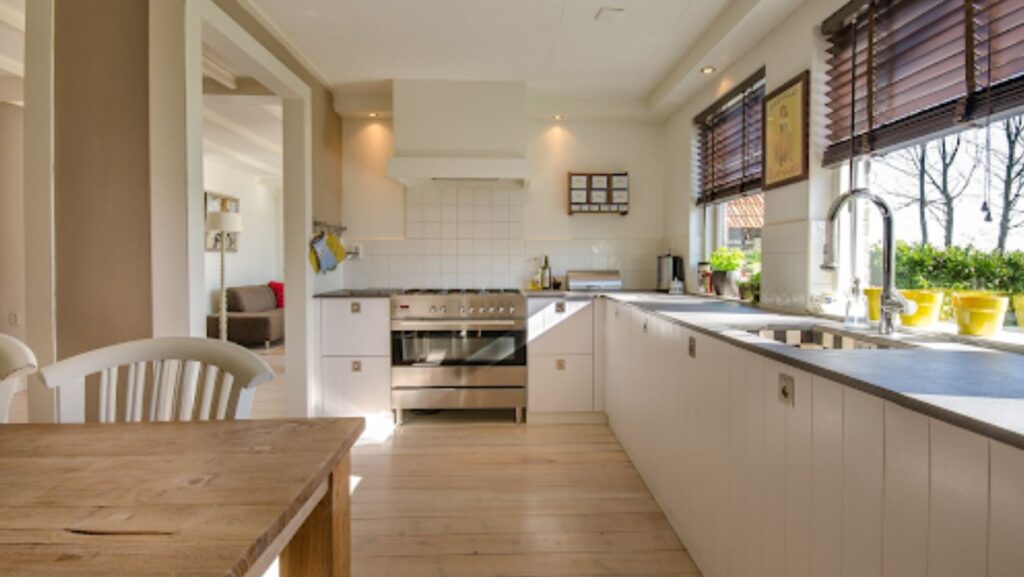Creating a safe home environment is a top priority for any homeowner. From natural disasters to everyday accidents, ensuring your home is secure can protect your family and your investments. There are various improvements you can implement to maximize home safety, ranging from structural enhancements to technological upgrades. This article will explore key improvements that can significantly boost your home’s safety.
Prioritizing Structural Integrity
One of the most critical aspects of home safety is ensuring the structural integrity of your home. This involves assessing and addressing any weaknesses in your home’s foundation, walls, and roof. Regular inspections can help identify issues early, allowing for timely repairs and preventing further damage, roof repairs and installation are particularly important, as a compromised roof can lead to leaks, mold growth, and further structural damage. Having a solid roof not only protects against the elements but also contributes to energy efficiency, reducing heating and cooling costs. Ensure that your roof is properly maintained and consider upgrading to more durable materials if your current roof is aging. This proactive approach not only enhances safety but also extends the lifespan of your home.
Enhancing Security Measures
Enhancing security measures is vital for protecting your home. Installing deadbolts, security cameras, and motion-sensor lights can deter potential intruders and give homeowners peace of mind. Deadbolts provide an extra layer of security beyond standard locks, making it more challenging for intruders to gain access.

Moreover, consider investing in a security system that includes alarms and monitoring services. Many modern systems can be controlled remotely through smartphone apps, allowing you to monitor your home while you’re away. These systems can alert you to any unusual activity, ensuring you’re always aware of your home’s security status.
Maintaining Outdoor Safety
Don’t overlook the importance of outdoor safety when maximizing home security. Regularly inspect your yard for hazards, such as overgrown shrubs or trees that may obstruct visibility. Trim any bushes that may provide cover for intruders, and ensure that pathways are well-lit.
Consider installing fencing around your property to add an extra layer of security. A sturdy fence not only deters intruders but also keeps children and pets safe within the yard. Additionally, ensure that any outdoor equipment or tools are stored securely when not in use to prevent accidents and potential theft. With services like Viking Rental, you can access secure, high-quality temporary fencing that helps define boundaries and control access, keeping people and property safe.
Improving Fire Safety
Fire safety is another crucial component of maximizing home safety. Regularly check your smoke detectors and replace the batteries at least once a year. Consider installing smoke detectors in every bedroom and on each level of your home for comprehensive coverage.
In addition to smoke detectors, having a fire extinguisher in key areas such as the kitchen, garage, and basement can be lifesaving. Ensure that all family members know where the extinguishers are located and how to use them properly. Creating and practicing a fire escape plan is equally important. This plan should include multiple escape routes and a designated meeting place outside the home.
Utilizing Smart Home Technology
Advancements in smart home technology have made it easier to enhance home safety. Smart locks, doorbell cameras, and home security systems can all be integrated into a single platform, allowing you to monitor and control your home’s security remotely. These devices can send alerts to your smartphone, informing you of any unusual activity or when doors are left unlocked.

Additionally, smart lighting systems can be programmed to simulate occupancy when you’re away, deterring potential burglars. By creating a secure and responsive environment, smart technology can enhance your peace of mind and ensure your home remains safe.
Regular Maintenance and Upgrades
Ongoing maintenance and timely upgrades are essential for maximizing home safety. Schedule regular inspections for plumbing, electrical systems, and HVAC units to identify and address potential hazards. Keeping these systems in good working order minimizes the risk of accidents, such as fires or flooding.
Consider upgrading old or outdated appliances, as newer models often come with enhanced safety features. For example, modern stoves may have automatic shut-off functions, reducing the risk of kitchen fires. Investing in energy-efficient windows and doors can also enhance safety by improving insulation and reducing the likelihood of break-ins.
Maximizing home safety is an ongoing process that requires attention to detail and a commitment to regular maintenance. By prioritizing structural integrity, enhancing security measures, improving fire safety, utilizing smart home technology, maintaining outdoor safety, and keeping up with regular maintenance and upgrades, homeowners can create a secure environment for their families.
A safe home not only protects against external threats but also fosters a sense of well-being for all residents. By taking proactive steps to enhance your home’s safety, you can ensure that your space remains a haven for your loved ones.



